What is the perfect sewing machine?
Does the perfect sewing machine even exist? I know this is a hot topic for anyone who is a quilter or sewist. A good sewing machine is often one of the most expensive tools we own and the most important tool in the sewing room. Today, I’m going to give you The Perfect Sewing Machine Checklist (speaking from a quilter’s point of view).

I’m on the hunt for the perfect sewing machine. And I’m not sure it’s out there, so I thought I would chat with all of you about it. While I was writing this blog post, I began to imagine what my DREAM sewing machine would look like and thus, The Perfect Sewing Machine Checklist was born! But first, let me tell you about my current sewing machines and why I’m searching for something else.
My sewing machines
I currently own FIVE sewing machines. I have a Bernina 770QE and a Bernina 440QE. I still love my Bernina 440, but I upgraded to the 770 when I wanted a larger throat (harp) space, but I couldn’t part with my original 440.

I thought I had found the perfect machine when I bought my Bernina 770QE in 2015 (I paid $5,000). This is a great, high-end sewing machine that has a lot of power and potential. It has integrated dual feed (IDF), a larger bobbin capacity, a stitch regulator for free motion quilting (that I don’t use) and lots of other features that I appreciate. It creates a beautiful stitch and it can handle thick seam intersections and just about anything else I “feed” it. I LOVE that I can change the settings on any stitch to any length and width I want. I can get a blanket stitch or zig zag stitch to the exact size I need with no limitations imposed. I don’t know of many machines that allow you to do that. It also has a fantastic walking foot and it’s so easy to change to a different foot when needed.
However, my particular machine turns out to be quite temperamental. It has an upper thread sensor that intermittently tells me my thread is broken when it’s not (and it won’t let me continue sewing until I re-thread the machine). I recently discovered that you can turn off the upper thread sensor which is a simple fix. I also had to replace the mother board; fortunately it was still under partial warranty.
I also own a Juki TL 2010Q. I bought this sewing machine for $800 in 2013 (I think) specifically for free motion quilting. It’s a solid, mechanical, straight-stitch only machine. It’s also great for piecing. I have it set up in my sewing room as a second machine so that I can have two “jobs” going on at the same time. In other words, I can use one machine for piecing and have the other one set up for quilting. It feels so luxurious to have that ability! The drawback is that I can’t use it for machine applique or anything that requires the needle position to move.

I have an Eversewn Sparrow 25 (no picture) that I use for my class machine. It’s lightweight and portable, so I can take it to and from the quilt shop I teach at. It’s a great little machine for the price (I paid $360 in 2017) and it has served me well. Even so, I might upgrade this machine soon to one that has more built-in features.
My last machine is a Singer 401A that belonged to my mom. This is the sewing machine that I learned to sew on in seventh grade. My parents gave it to me six years ago, and it lovingly sits in my grandmother’s original sewing cabinet which is now located in my sewing room. I have more of an emotional attachment to this machine. I know it can still stitch beautifully and I should use it once in a while. Some day.

With all of these sewing machines at my disposal, what more could I be looking for? The industry leaders are taking advantage of new technologies and I’m completely enthralled with the laser guide beam. I’ve only seen this on the Babylock Crescendo, but I believe it’s available on other brands and models. This guide beam can be used in place of drawing diagonal lines for HST’s and stitch and flip squares. It can also be moved to create a specific seam allowance or to guide a seam for other purposes. I feel like I would use this function ALL the time. I know you can buy a separate guide beam and attach it to any sewing machine, but it seems like it wouldn’t be as precise or adjustable.
The Crescendo also has a sensor pen that can be used to tell your machine exactly where you want your needle and stitches positioned and where to stop. This would be really useful for machine applique. I also like that it has a manual presser foot lever as well as an automatic pivot function. I’ve never owned a Babylock machine before, but I’ve heard good things about them. I recently test drove one and I liked how it performed. This is not a sponsored blog post, by the way.

So…. I’m not sure that I’m willing to give up some of the things I love about my Bernina for any of the new features of a different machine (especially that guide beam). I can’t sneak add another machine into my sewing room, so I would have to give up something. Somebody really needs to come up with the perfect sewing machine that has it all.
The perfect sewing machine check list
In my opinion, the perfect sewing machine (for quilters) would have the following features:
- Large throat (harp) space
- Guide beam
- Large bobbin capacity
- Separate bobbin winder
- Automatic thread cutter
- Automatic needle threader
- Automatic tension
- Knee lift or hands-free presser foot capability
- Needle up/down
- Speed control dial
- Integrated dual feed system
- Excellent walking foot in addition to IDF (above)
- Intuitive operating system (ease of use)
- Excellent stitch quality
- Powerful motor
- No limits to stitch length and width settings
- A variety of blanket stitches (I love to applique)
- Mirror imaging capability
- Extension table
- Good lighting
- Stitch regulator for free motion quilting
- Easy to use bobbin system
- Ability to adjust the pressure of the presser foot
- Affordable price tag (since I’m dreaming)
I’m sure I didn’t think of everything. What would you add to the list? Do you have a sewing machine that you love? Please share in the comments so we can all learn from each other.
If you would like more information about this topic, check out my Sewing Machine Advice, Sewing Machine Advice Part 2 (make sure to read the comments there, too) and 7 Tips for Buying a Sewing Machine.
Thanks for reading and may we all find the perfect sewing machine to suit our needs!
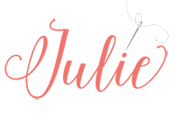
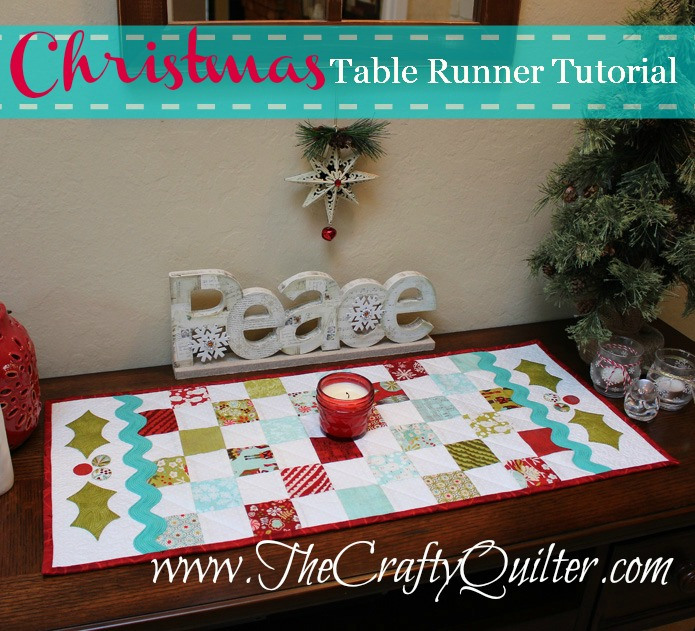
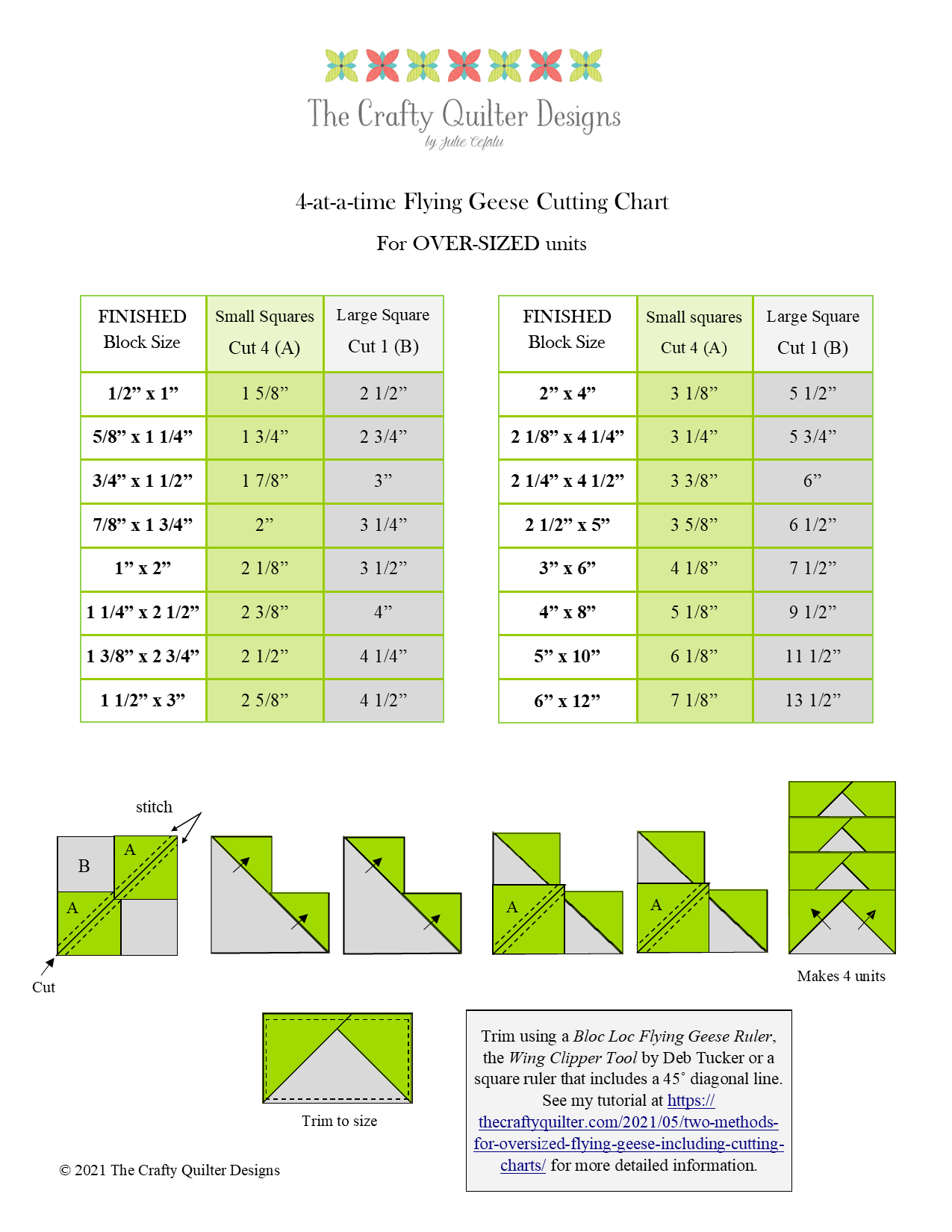
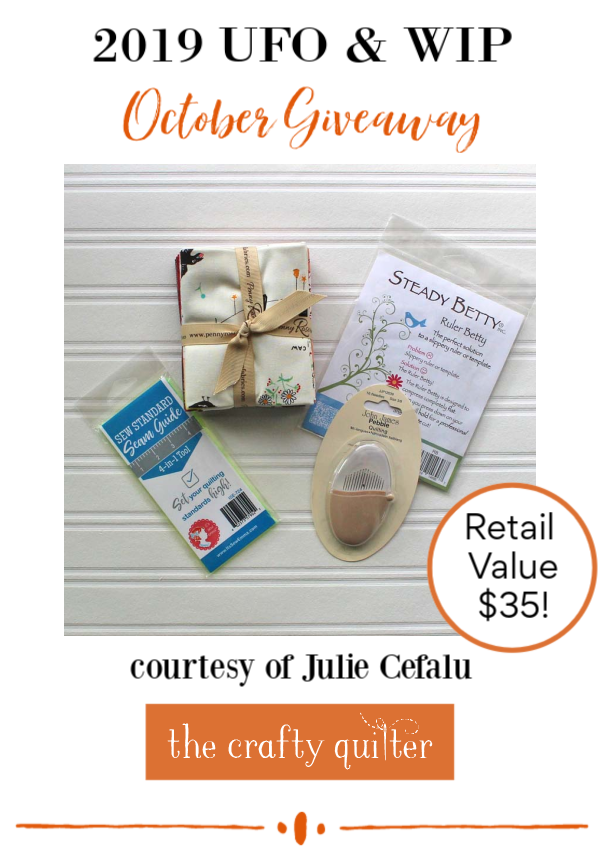
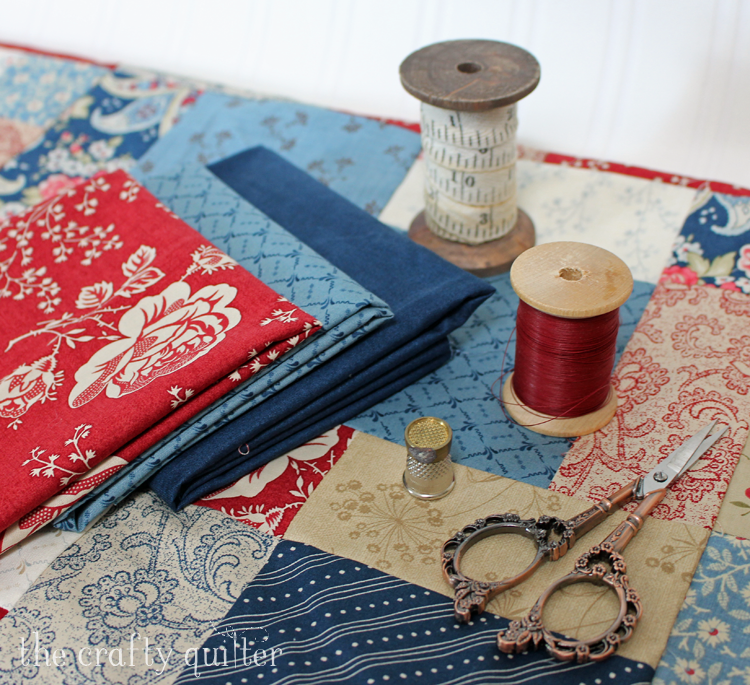
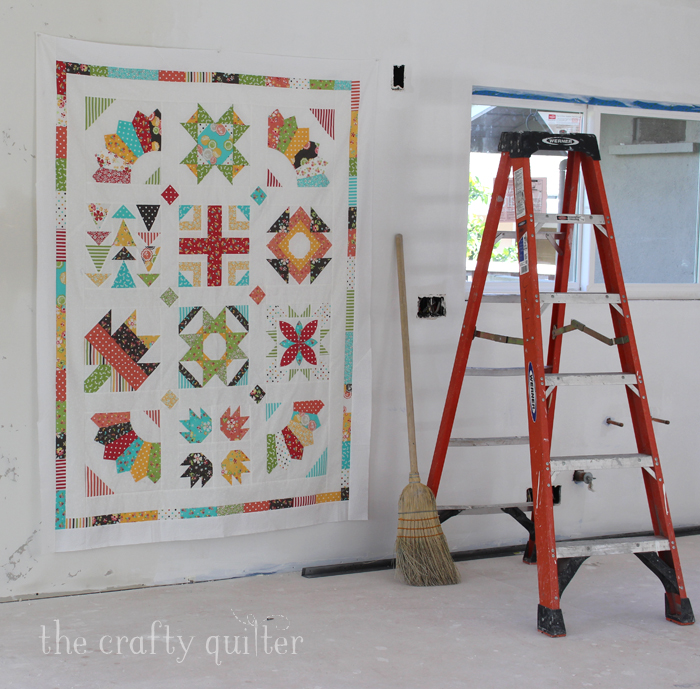
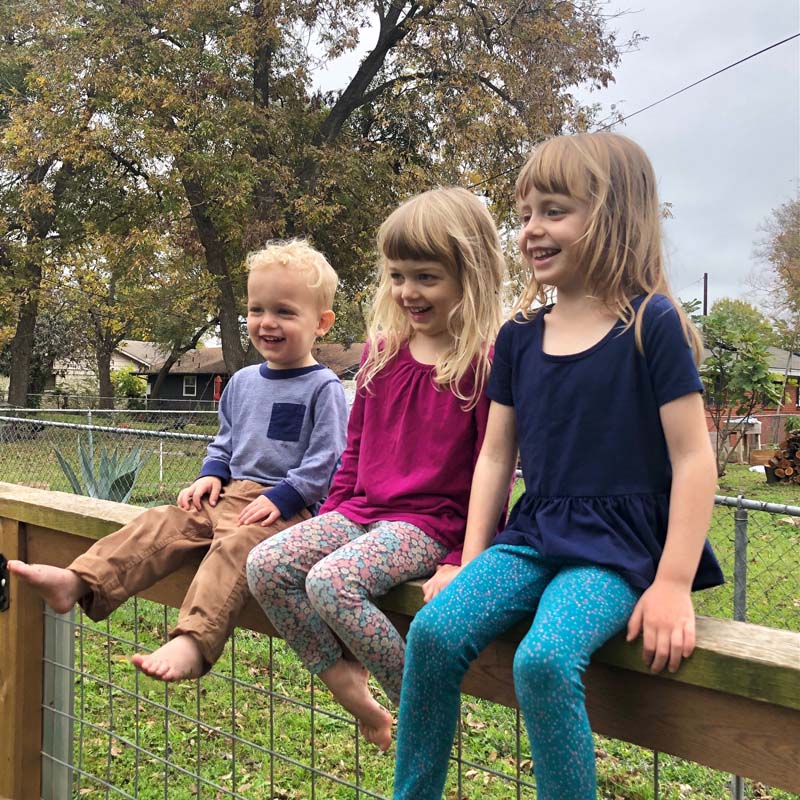
To your perfect machine, I would like to add a free arm that’s as narrow as they had on vintage machines, one that’s narrow enough for a shirt cuff to easily fit.
very clear and good article easy to understand. Thank you
I have a brother dream machine. I wouldn’t part with it. It has everything that I need and I believe about everything on your list.. They have had new advancements since I bought my dream machine so there may be even a better machine out there than the dream machine. But I’m sticking with my dream machine because it’s everything I need.
I work with linen making quilts. I have a Bernina 770qe that I can’t work without but for that I want something I can take with me (at least 25 oct less weight and size)
Do u think the JuKi would be best for this? Table, dual feed?, anchoring stitch or other? Ty so much for the help
Hi Julie I love your checklist. I have a Janome mc6650 and it sure meets all the things I need in a perfect sewing machine and most of the things you listed minus laser.
I use a Brother Pacesetter nx 200, and I love that it doesn’t require a bobbin case. At school, we use Bernina B330s, and I hate having to use the bobbin case. It just seems like an extra hassle and thing to worry about. Granted, I am a beginner sewer, so I dont know if there is an advantage to having the bobbin case, but if I don’t need one, that would definitely be on my checklist!
Wow! I confess I don’t even know what all the things are on your list. I’m basically a beginner. I’ve made about ten quilts over the last ten years. I think four I hand quilted and the others I quilted on my sewing machine. My sewing machine is a Janome 3022, which I bought in 2007 for around $250. It still works pretty well, but I sure drool over the machines with a larger throat plate. That’s at the top of my list. The budget is tight for purchasing anything new, so I’m looking for a good used machine that someone wants to sell because they are upgrading. I recently inherited my mom’s blue steel Kenmore sewing machine that my dad bought for her a few months before I was born in 1959. It’s the machine I used for my Home Ec homework in the 70s. I’m having it serviced now. I just discovered your blog, so would love advice for a good budget-friendly machine.
I too learned to sew in second grade pn my mom’s 401 that we still have. I upgrades my
Bernina to the 800 recently.
I had My Singer 401A. It was an absolute beast. I really liked experimenting with it. Which one is your favorite among these?
Love your list. Also would add 1/4 inch guide even with laser. Scissor cutter. Ability to stitch front, back, left, right, & angles – kind of like x’s. Good for mending. Yes I know but have to sometimes. Also easy change throat plate for piecing- single hole, & zigzag throat plate. Helpful to have machine tell you if wrong plate in for stitch selection so don’t break needle or throw out of whack. Lots of good lighting is essential. Few more font sizes. Excellent warranty & customer service! I love my Laura Ashley Brother machine! Sorry if any repeats.
I have a laura ashly and love it. Also a quattro for embroidery
Great list, Julie! I sew on a Bernina and would miss the ability to raise/lower the needle with the back of the foot pedal. So, that’s a must for me. Also, I would like to be able set the needle up/down in the down position as a default so that I wouldn’t have to set it each time I sew. And, while you did mention lighting, I second that thought. The older my eyes get, the more lighting help they need.
Brother makes a dual function foot control you can set the heel tap to one of four different functions. I have mine set to needle up/down which is what my Bernina 1130 did.
I have large hands. My SIL’s Bernina has the bobbin race so far into the machine that I cannot hold on to the bobbin case to insert it so deeply. So ease of inserting bobbin and space depth around the needle/presser foot is important to me. Love my little Pfaff Select.
Thank you so much for this post, Julie. I saved the one you did earlier! I still have my grandmother’s Singer treadle on which I learned to sew. First machine I bought was a Kenmore which only did a straight stitch. Amazing how many things I was able to sew with only a straight stitch! Years later I bought a Singer with more stitches and free arm. When I moved across country I got rid of the Kenmore and later sold the Singer at a garage sale because I had a newer machine and convinced myself I didn’t need so many. Wish I still had both those older machines. It never occurred to me that they most likely had metal parts and the newer machines probably have a lot of plastic instead! I currently have a Viking Sapphire which is a nice machine and a Viking Diamond Royale which is basically a Sapphire with an embroidery module. I did not know anywhere near enough about machines when I bought these or I probably would have gone with Brother or BabyLock. My main complaint is with the local dealer’s service after the sale. I’m thinking of the BL Crescendo so was interested in your comments.
I purchased a super cheap laser at Harbor Freight and mounted it on my machine, but I have problems with having to replace the battery way too often so I don’t really use it. Laura at Slice of Pi Quilts has written many articles about adding an after-market laser and she recently reviewed a laser made specifically for sewing machines. I haven’t used one, but it’s on my Christmas wish list! Pricey for a notion, perhaps, but a lot cheaper than a new machine.
http://www.sliceofpiquilts.com/2019/07/adding-laser-to-any-sewing-machine.html#more
This is a fantastic article, Julie, with lots of great things to think about. I agree with other posters that I would add reliability and ease of getting it serviced locally to the list. The shop where I bought mine was an hour drive away, so I’d have to leave it for at least a week when it was serviced. That shop just went out of business (owner retired) so now I need a new service technician. Nothing I could have known before I bought the machine 4 years ago, but as long as we’re dreaming!
Hello Julie,
I would like to add Brother SE400 Sewing Machine to this list, it’s so good and with it Nothing is Impossible!
Enjoyed all the comments on the different machines. I have a Bernina 930 and love it, a Singer lite weight with a lot of feet I real like and it does a good job but only had a small embroidery. The largest is 7 inches. Was looking at info on the Bernina 830. Does lots of things but don’t know if I can learn it all. I’m getting up in age so a little scarey. Do not know witch model would be the simplest to work but not be limited to what it can do? Sorry this got a little long.
Eversewn makes the sparrow QE comparable to the Bernina but a lot less money
I have an Eversewn Sparrow 30. I love it. It has many features I love. I learned to sew on a Singer featherweight and wish I had kept it. I’ve been thinking about a new machine so your article was helpful.
Hover mode ehere the foot lifts up a bit when the machine stops for chain piecing and pivoting.
I have 5 machines too.
My main machine is a Brother Dreamweaver VQ3000, that has all but 4 of the features you mentioned: 1) No IDF, but it does have its own form of walking foot called a “MUV-It” which is the same thing as the “Digital Dual Feed” on the Baby Lock Crescendo. 2) no unlimited length and width of stitches. The VQ3000 will make a standard stitch of up to 20mm long, max, which is great for basting quilts when used with the “MUV-IT”. It also has a stitch width of 7mm max for most zigzag and decorative stitches. 3) It does not have a stitch regular for FMQ – the only thing I wish it DID have. There is one I could buy for it if I wanted to pay the price – maybe someday because it’s NOT cheap. 4) An affordable price – Hah! Yeah, I guess that’s why it’s named the “Dream” Weaver. The one I have is a version or two back and I was lucky to get it for a great price from a dealer who used it as a demo machine He tuned it up for me and it came with almost ever accessory you can get.
I LOVE it and it works beautifully for me. It’s superb for quilting as it has a huge 11.25” harp space. And yes, the laser guide is terrific for half-square triangles, joining borders, binding and anything else where you want accuracy. It was VERY easy to learn and has a terrific manual. One of the nicest features is that it tells you when the bobbin is almost empty. And interestingly, it’s really the same machine as the Crescendo – just a few minor differences – and as someone said, both machines are made by the same company. I’ve done research on it and learned that Brother and Baby Lock are pretty much the same company, and often both brands are built in the same factories. The Brother label is just a little less expensive. Even so, the newest top-of-the-line Brother models are ridiculously expensive – in the $10,000 range for the high end Luminaire, I believe. Yikes!!!
And just in case you’re interested, Singer is no longer Singer, it’s part of a conglomerate called SVP (Singer, Viking, Pfaff) which produces all those machines. Sadly, some of them aren’t what they used to be.
My 2nd machine is a 50-year-old Kenmore 158-14000, a duplicate of the one I had as a teenager in the 60’s. I love this little machine. I used the original one for many years and made everything from simple skirts to my daughter’s wedding gown with it. It’s dependable, sturdy, makes beautiful stitches both straight & zigzag. I use it as backup when the Brother needs routine maintenance. It’s a real workhorse and will outlive me if well-maintained. The VQ3000 and the Kenmore are each mounted in its own table and sit catty-corner to one another – convenient if I’m working on two projects at a time.
I also have a lightweight Brother SC3000 which I take to my weekly quilting group get-togethers. It has just enough features for this purpose – needle-down, presser foot adjustment, easy-load bobbin, and it makes lovely stitches. It’s noisy and too small to put a quilt through but it’s fine for piecing and binding. I have a 30+year old Baby Lock, an early “computerized” model which never breaks down, it just keeps going and going. It’s too heavy for trips to the quilting meet but it works great and is good to have around.
Like you, for sentimental reasons I keep my mother’s White Rotary 77, crinkle-finish “tank” that she used and on which I learned to sew when I was around seven. It’s EXTREMELY heavy and is mounted in its own table thank heaven, because I like to open it up now and then to run it, so it doesn’t freeze. Hefting it out of a closet or off a shelf would be difficult. When I said “tank”, I wasn’t kidding!
Lastly, I have a Euro-Pro serger which works great too but doesn’t get a whole lot of use these days because I prefer to use a ball point double-needle on the VQ3000 when sewing knits.
As far as the perfect sewing machine is concerned, I don’t believe there is one. We are all different in our sewing needs and wants. What’s perfect for one person will not necessarily work for another. Some people are devoted to a specific brand, others look for special capabilities regardless of the make. The bottom line: When you find the machine that YOU love, that’s the perfect machine for you, no matter what someone else believes or what bells and whistles it does or doesn’t have.
So much for my two-cents!
Very good answer to the question. Everyone is different. Thank you for your input.
Hi I took a kenmore to Laura Knowns first quilt lessons in Laffayett Ca and it wasent seen as pc but I loved that machine. A little work horse and I made my first quilt and was hooked .
how about some daylight l.e.d. lighting ?
I just bought a Janome Memory Craft 9450 two weeks ago. It has all the features you mentioned with the exception of the laser guide beam. After trying out dozens of brands, most of which cost far more, I decide on the Janome. My previous machine was a Janome 3160QDC which I still own and will continue to use especially for travel. I have had this machine over 10 years and it has been super dependable. I got a show price of $3200 and I believe it retails for around $6000. It has so many features that I haven’t even begun to figure them all out, but I think I made an excellent choice!
The one thing that I don’t have on my two machines, is when you move the needle, set it to a certain length and width to do applique, then you have to write it down before you shut it off because it doesn’t save your settings.
Wow, i only dream that i could even have 1 of your old machines. I sew by hand
This may not be something you want to add to your list. But, I would add dependability. I have a newer machine that I love, but it too, is temperamental. I’ve learned to work around the quirks. But,I would sacrifice some of the technology for dependability.
Yes! Sysan is right. I have a message on my embroidery machine when the bobbin is running out. Why can’t sewing machines have the same bell or alarm? That would be nice.
Re: Baby Lock – I tried one and liked almost everything about it, though it was a mi-range, not high end. But – I sometimes need to sew in reverse. It has a little 3 step stitch thing it does to lock the beginning or end of a seam to secure stitches, but you cannot sew in reverse. I use my Bernina 1080 with the walking foot to quilt small quilts, and find stitching in reverse very handy. Like in the ditch around star points. And I still do some garment sewing & mending. I did not buy the machine for this reason.
I cannot imagine that there is Babylock that cannot sew in reverse. Someone please correct me if I’m wrong. Sue
My BLCrescendo will sew in reverse if you hold down the reverse button. Not very convenient for long distance sewing! That leaves only one hand for steering.
I just bought a Baby lock Soprano,it does everything but embroidery. It should come with the guy that does the sewing lol
Julie, I’m new to your blog and I thought I wrote this one!! I too am longing for the perfect sewing machine. I have 5 (counting my serger).
In size order:
Bernina 770 QE
Juki TL-98Q
Capitol Deluxe (Singer clone)
Singer featherweight
They each serve a specific purpose.
The featherweight is for travel. I take it with me and sew in hotel rooms!!
The Juki is my favorite for straight stitch speed and also sits on my Inspira long arm quilting frame.
The Capitol is a mid-1960’s Japanese Singer clone which my husband bought for me so that I would have a zig zag backup machine when the Bernina is in the shop. It actually is the most quiet and has a beautiful stitch! I wish all machines worked like this one.
I bought my Bernina 770QE 4 years ago after a 10-year search for the perfect machine. Mine is also temperamental, noisy and less than perfect to me.
I had been sewing with Pfaff for over 20 years and I loved them. When my son married, I gave my new daughter-in-law my 7570 to teach her how to sew and bought the 2144. I was extremely disappointed with this machine and thus began my search.
During my “wilderness wandering” I tried a Viking Sapphire, Pfaff 4.0, and Pfaff Smarter. Nothing compared to the 7550. All had drop in horizontal bobbins. Frustrated, I actually went back to a used 7550 for a few years. My last one had the motherboard replaced 3 times! Since that part was not available anymore I had to find a replacement. My search required IDF and a metal frame so the Bernina was pretty much the only option.
Overall, my Bernina has been a good machine. I’m annoyed with the time it takes to turn on and the temperamental issues. It has way more bells and whistles for my needs. Today I made my wish list and then looked up “the perfect machine” and found your blog!!
Here’s my want list:
Metal frame
Vertical bobbin case
Multiple LED lights
10” x 6” harp/throat plate
9mm stitch width
6mm stitch length
1500+ stitches/minute
Integrated dual feed
Needle up/down
Multiple needle positions
Return to center, far left, far right needle buttons
Needle threader (that works)
Simple threading path
Low bobbin indicator
Smooth, quiet motor
Excellent stitch quality
1-Straight
2-center zig zag
3-left/right side zig zag
4- 3step zig zag
5-appliqué zig zag
6-serpentine
7-blind hem
8-knit blind hem
9- faggoting
10-simple flower
11-simple leaf
12-blanket stitch
13-buttonholes
Vertical/horizontal stitch mirroring
Single stitch pattern
Reverse button above needle Thread cutter away from reverse button
Vertical/horizontal thread spool pins
Built in thread stand
Drop feed dogs
Multiple feed dogs
Zig zag and straight stitch plates
Quick start at on switch (not computerized)
Presser foot lifter
Presser foot pressure adjustment dial
Knee lift
Tension adjustment dial
Ease of oiling
Bobbin winder
1-Clear foot with markings
2-1/4” foot
3-Edge stitch foot
4-Zipper foot
5-Rolled hem foot
6-Quilting foot
Snap on feet
Accessory tray
See easy clear extended table with inch and CM markings, dead center needle, 1/4”, 5/8”, diagonal markings, 1/4” from needle
Carrying handle
I have a Singer Confident Quilter that I bought 3 or 4 years ago. I have never had any problems with it to date and the price was less than $200. I bought it on line as I didn’t know much about machines and after reading all the things available in a machine, your article and all the comments are very educational. Thank you Julie and thank you to everyone who commented.
I too have 5 machines my first in 1984 was a brother and then I bought the first serger that brother put on the market it was 499.00 but it is still going strong. The machines I have are Vikings. I have a designer 1, designer se and last one was a topaz 30. The quality to me slips on biking d/t machines no longer being made in Sweden. It us louder and just doesn’t have the quality that the other 2 other ones have. Take time when buying and sometimes older used is better.
I too had a Bernina 440QE and loved it, but it died in January and the part was no longer beening made and my Bernina dealer could not find one. So I gave up and purchased the 740 in April. Would have liked the 770 but I did not want to spend the money for the embroidery feature which I will not use. I wish the 740 had a manuel pressure foot lever, I’m old school and learning to use the button to lower the pressure foot is challenging. I too love machine applique, so the main 3 stitches I use are the straight, zigzag and blanket stitches.
N
I bought the Bernina Aurora for the stitch regulator and presser foot pressure adjudtment, and fell in love with speed control. It’s as heavy as a boat anchor which is why I have the Featherweight that’s older than me Best thing for sewing was buying a cabinet for the machine…improved the free motion overall.Thx
I have a Janome 15000 and love it. I was a Bernina girl and like you kept my 440 when I upgraded. I also have a Babylock as my take to class and retreat machine. When I decided to buy another machine I made a list of must haves including the widest harp and best stitch, an automatic cutter, a variety of stiches for applique and value for dollar. I brought strips of fabric to practice straight stitching for piecing, and applique sample to test those stitches and a quilt sample to test the harp size and how the machine handled machine quilting, free motion and walking foot. I also brought my own thread so I was using what I normally use not what the dealer chose for the perfect showroom stitch. I tested machines at the 3 dealers near me, near being up to 90 minutes with traffic. In those 3 shops I tested Berninas, Baby Locks and Janomes.
I was also asking about feet, what comes with the purchase, what else might I need, and price of the feet. Bernina has wonderful feet but they are ridiculously expensive. I was also looking at the shop’s personality, were they friendly and helpful, did they have scheduled machine training classes or was their training sitting with 1 person and walking through the machine? Did they repair their machines in house or send them out to be repaired.
Knowing their were more brands out there and seeking the best price I went to a large quilt show where I knew every manufacturer would have a presence. I tested the original 3 machine companies plus Viking, Pfaff, and Brother. I spoke with techs, company reps and other quilters that were also looking for a new machine and tested at least one model from each company and sometimes more. It was a long day of testing, talking and testing some more.
Much to my surprise after sleeping on the information I purchased a Janome 15000. It had the straightest stitch a wide harp, dual feed feet, multiple needle positions and not only a 1/4 inch foot but they have a an HP stitch plate and foot combo that is the best piecing foot I have ever used. The machine came with lots of feet, 3 stitch plates (straight, zigzag and the HP), 3 bobbin cases and 2 excellent built in light sources. Janome also has 2 other models that are less $$ with similar features.
Make sure which ever machine you buy that you have a dealer you are comfortable with because at the end of the day they will make or break your total experience.
What a great list for the perfect sewing machine! I really like the scant quarter inch piecing foot that Pfaff offers.
Loved your blog! Besides my 2 Singers in cabinets (emotional attachments like yours), I have Berninas: 1008 (mechanical not computerized workhorse I take to retreats), 440 (love, will never sell) & recently purchased 770QE which I love. So many wonderful features & learning more each day.
I love ly Janome 6600 p it has the scissor cut action.
I have just brought a quilter’s choice machine, yet to try her out i also have a brother xl2620 have had her for a few years and have done a few quilts on her she still works like a jem, I too think it depends on the brand that you like to use, maybe there is a machine out that dose everything we can only hope that someone comes up with one.
I have 2 Babylock machines, a “Professional” and a Designers Choice. Love the Professional but it only does a straight stitch, so when I decided I wanted more features and stitches, bought the Designers – and have regretted it ever since. I often describe it as “the machine from Hell”. Have probably spent as much getting it serviced as I did to buy it – and that was $2000! Do not feel I can sell it OR give it away, it has so many problems.
So went out and bought a $300 Brother 3 years ago that has all the features of the Designers, and have never had a problem. Reliable, light for carrying to all my quilt groups, NEVER have had any issue with it. So happy. Then find out it is built by Babylock!
Would never again pay big bucks for a machine.
Hi Julie! Great post! I have 5 Babylock machines — I purchased the Destiny model in 2016 when I retired — it has many of the features you mentioned. Machine embroidery is my first love which is why I chose Babylock over Bernina. Earlier this year I purchased a Juki DX-7 which is now my go to my go to machine for piecing. I use my Babylock Ellisimo for quilting and the Destiny and Spirit for embroidery. The Esante is my travel machine since it sews and embroiders. All in all I’m pretty happy with my machines.
Hi Julie– great post! I own 5 Babylock machines — I purchased the Destiny right before I retired in 2016 — I love it! Machine embroidery is my first love which is why I chose Babylock over Bernina. My Babylock Esante is my travel machine — earlier this year I purchased the Juki DX7 which now my go to machine for piecing. All in all I’m happy with all of my machines but I still am looking for the perfect machine!!
That’s a great list of wants in the perfect machine, Julie! Since I like to incorporate embroidery with my quilting, I would have to add that to the perfect machine! I currently have a Bernina 830E which is a workhorse, I love that machine. I have the 10×16 hoop and most recently used it to stitch out some big floral butterflies I digitized as part of our guild’s donation quilt I made this year. It does the best embroidery. I also have a Baby Lock Ellisimo Gold 2 which is trying to find a new home! And last year at the Sewing and Quilt Expo I bought a Pfaff Creative Icon. I love all three machines and can stitch on one and embroider on the other if I want to, but have no need really to keep three going. My friend is trying to talk her hubby into buying her my Baby Lock. It’s a great machine, but as I said, just don’t need three!
My main machine is a Janome MC6600p. I’ve had it nine years and never had any trouble with it. I also have a Singer 301A and a Singer hand crank!
Oh yummy. Something new to try out. I saw a Brother machine (sorry, don’t know the model) on It’s Sew Easy that used a laser to guide stitching. I wasn’t thinking quilt at the time but when you say HSTs, that feature would be fabulous. I have two older Vikings that I love and there is nothing wrong with them. That said, some of the newer features that pop up these days do make me drool. I’ve test driven a few machines lately. The Berninas I tried out are great but I really really really do not like a bobbin case. Bad memories of first learning to sew in the 70s–ugh. I’d have to add DROP IN BOBBIN to your list. Great list btw.
I would just be happy with 1 of your old machines. I sew by hand.
A few years ago I stumbled onto a Featherweight for a very reasonable price. I love this little workhorse. I also have a Huskystar C20 by Husqvarna Viking. I have also been pleased with this machine.
Julie,
I enjoyed your article on sewing machines and loved the photo of you sewing with your granddaughter. I have grands that are 3 years and one year. Can’t wait to sew with them in the future!! I have more than one sewing machine for similar reasons that you mentioned. I have my mother’s Singer 237 that I learned to sew on. She only used it for mending, but I made bridesmaid dresses on it for my sisters to wear to my wedding, window treatments for my house, and clothing for my own children when they were little. I have my great, grandmother’s Singer Treadle, made in 1910. I have a cute Singer Featherweight, because I wanted one. My daily piecing is on a portable Janome Jem 720/760. It’s a wonderful machine for piecing, applique, and general sewing. For a bigger harp for quilting, I have the Janome Horizon 7700. Janome packs a lot of sewing machine in at great prices. I love Janomes, but I do like to go back to my Singers once in awhile. HAPPY SEWING!!!
I have a Janome 9450 that I love for quilting and sewing.
I’d add a thread cutter to the list. Everything else looks good.
I also learned how to sew on a Singer 401A in high school Home Ec class in 1962. My mother bought the machine for me from the Singer store but it was a floor model that had some dings on it. Later on, she bought me the cabinet and then my uncle bought me the matching chair. I love that machine, it’s a real work horse and has been faithful all these years with minimal care. You brought back lots of memories, Julie. Thanks.
Thank you for your list.
My 2 Vikings have infinite needle position & I would miss that terribly.
I have a Husqvarna 500 and I also have a Husqvarna Diamond Deluxe Designer machine which I absolutely love. I can change my stitches any way I like and my Diamond has a great walking foot and all the feet are easy to change. Love doing embroidery on it too! The new Husqvarna has the beam you are referencing as well and many other features. Unfortunately, I an nowhere nearly a good enough sewist to invest $17,000.000 to buy it!
Julie, I have had a 440QE for many years and just purchased the 770QE for the reasons you stated. I, too, could not give up my 440!
I like the stop/start button on my machine. I use it more than I thought that I would. I would love,love,love an alarm that would tell me when my bobbin is out of thread! That would save me a Lot of aggravation!
Many, if not most, Brother/ Babylock machine have that feature.
You can purchase an add on laser for any sewing machine
I purchased the top rated laser for adding onto my sewing machine and have been unable to get it stabilized enough to make it useful. My machine- a Designer Diamond SE vibrates very little and I put it on a foam pad also to help with this problem, but it didn’t help. I would save my money and not buy an add on laser. Just not worth the $40. plus dollars